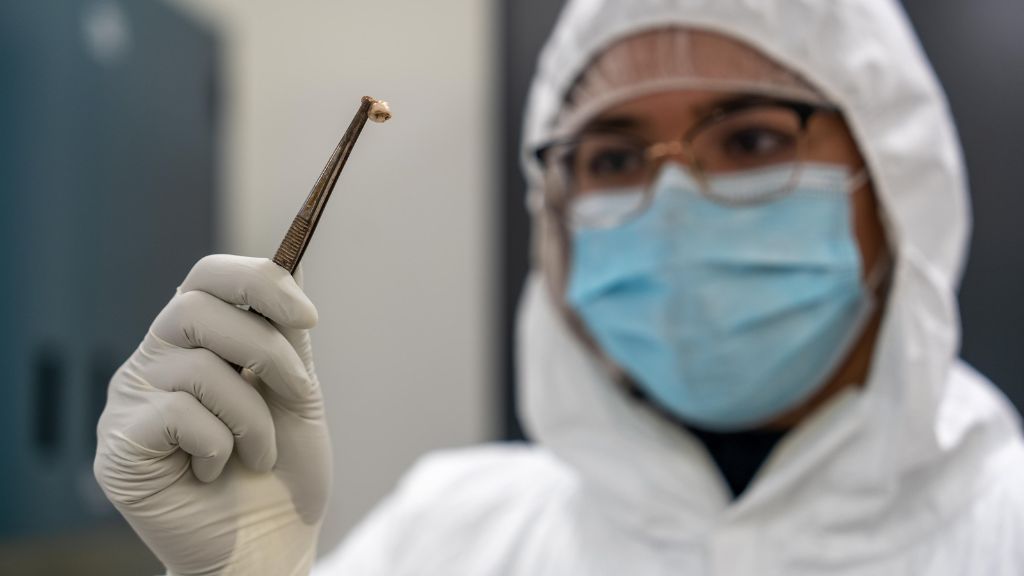'Black death' survivors had plague-resistant genes that may boost their descendants' risk of autoimmune disease
The Black Death pushed certain protective genetic variants to become more common in survivors' descendants, DNA from the Middle Ages reveals.

Survivors of the Black Death passed plague-resistant genes down to their descendants. But these genes may make modern carriers more susceptible to some autoimmune diseases, a new study of ancient DNA suggests.
The Black Death, a 14th century pandemic of bubonic plague caused by the bacterium Yersinia pestis, killed an estimated 30% to 50% of the population of Europe in just five years. Following the pandemic, Europe experienced outbreaks of plague that flared up every few years; however, as a general trend, each subsequent outbreak claimed fewer lives than the last.
It's possible that the fatality rate dwindled due to evolutionary changes in the Y. pestis bacterium or in European cultural practices related to hygiene. But the improved survival rate may also reflect rapid natural selection driven by the pandemic. In this scenario, people with plague-resistant genes survived more often and thus passed those genes on to the next generation at higher rates, scientists theorized.
To test this idea, researchers collected more than 500 DNA samples from the remains of people who died before, during or soon after the Black Death swept through England and Denmark. Their results, published Wednesday (Oct. 19) in the journal Nature, support the idea that the Black Death drove certain versions of genes to become more common in later generations.
Related: 21 of the worst epidemics and pandemics in history
"Individuals that had those alleles, those mutations, were more likely to survive and transmit those mutations to the next generation," said Luis Barreiro, co-senior author and principal investigator of the evolutionary immunogenomics lab at the University of Chicago.
For their analyses, the researchers extracted DNA from remains buried in London's East Smithfield plague pits, a roughly 5-acre (2-hectare) cemetery that was used for mass burials between 1348 and 1350. They gathered 318 samples from Smithfield and other London locations and 198 samples from five places in Denmark. DNA came from people who died up to 500 years before the Black Death started and up to 450 years after it ended, with many of those samples coming from time periods closer to the event.
Sign up for the Live Science daily newsletter now
Get the world’s most fascinating discoveries delivered straight to your inbox.
"It's the first study [of ancient DNA] that does it focusing on such a precise and narrow window of time," said David Enard, an assistant professor in the department of ecology evolutionary biology department at the University of Arizona, who was not involved in the study.
The DNA was heavily degraded and mixed in with other environmental DNA, including that left behind by microbes, so the team chose to look at only small regions of the genome, Barreiro told Live Science. They focused on roughly 350 specific genes known to be involved in the immune system, as well as some 500 broader regions of the genome previously linked to immune disorders.
Among the immune-related genes, the team identified 245 gene variants — meaning specific "flavors" of different genes — that became significantly more prevalent in Londoners following the Black Death. Four of these also cropped up in the Denmark samples.
Related: Arizona man went a month without knowing he had the plague
A wide array of genes work together to produce immune responses against pathogens, such as Y. pestis, so it follows that many of those genes would fall under natural selection during a harrowing pandemic like the Black Death, Enard said. It also makes sense that the England and Denmark samples might show different patterns of variation in these genes, he said.
The team then wanted to understand if and how the genes they flagged protected people from plague. To do so, they collected immune cells, called macrophages, from living people; analyzed their genetic makeup; and then exposed these cells to Y. pestis in petri dishes.

One gene — ERAP2 — seemed to be a key weapon in the immune cells' arsenal.
At least in petri dishes, macrophages that carried two copies of the version of ERAP2 that became more common after the Black Death killed Y. pestis more effectively than those with one or no copies of the gene variant. ERAP2 contains instructions to build a protein that helps immune cells display bits of foreign invaders like bacteria on their surfaces. This raises a "red flag" to other immune cells, calling them to help battle the bug.
Macrophages also spew substances called cytokines to rally the immune system for the fight. The array of cytokines released by cells varied depending on what versions of the ERAP2 gene they carried, the team found.
These results hint that the post-plague version of ERAP2 did indeed give carriers an edge against the Black Death, though lab dish studies don't perfectly capture what happens in a human being, Barreiro noted.
This protection against the plague may have come at a cost, however. According to a 2016 report in the Clinical and Translational Gastroenterology, the version of ERAP2 that protects against Y. pestis is a known risk factor for Crohn’s disease. Other genetic variants flagged in the new study have been linked to an increased risk of autoimmune diseases, including rheumatoid arthritis and lupus, the study authors noted.
"Perhaps this increased risk simply did not matter during the Black Death — the urgency of the pandemic might have made the trade-off an inevitable one," Enard wrote in a commentary published in Nature. Similar trade-offs likely unfolded during other historic outbreaks, before and after the Black Death, Enard told Live Science, so the echoes of these events may still ring in modern humans' DNA.

Nicoletta Lanese is the health channel editor at Live Science and was previously a news editor and staff writer at the site. She holds a graduate certificate in science communication from UC Santa Cruz and degrees in neuroscience and dance from the University of Florida. Her work has appeared in The Scientist, Science News, the Mercury News, Mongabay and Stanford Medicine Magazine, among other outlets. Based in NYC, she also remains heavily involved in dance and performs in local choreographers' work.









